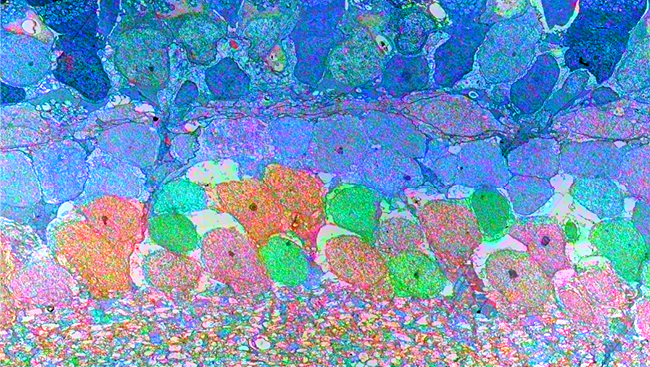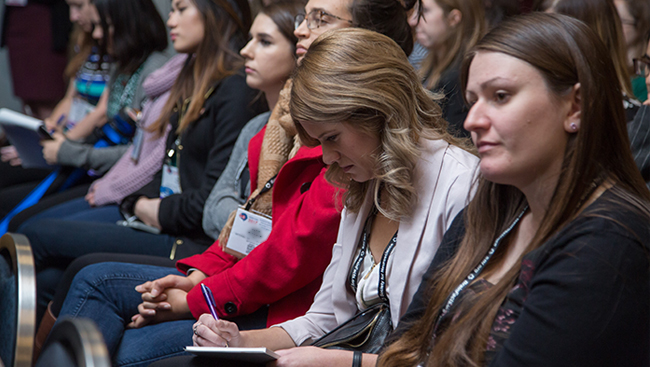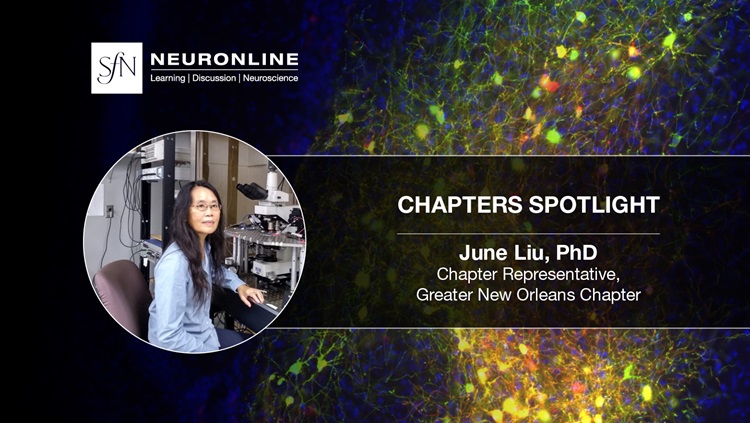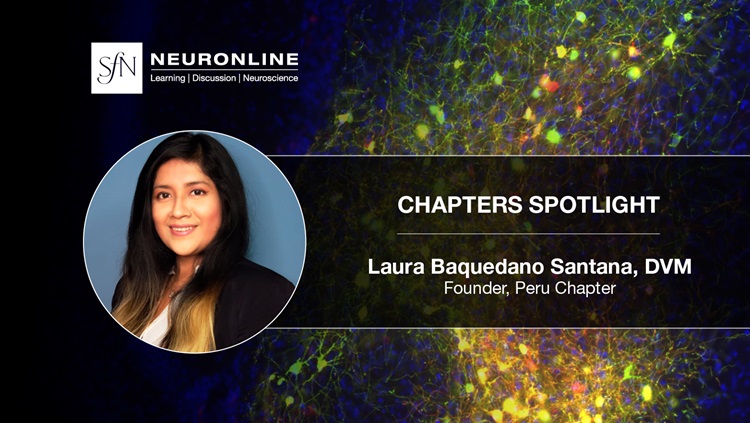The Benefits of a Regional Scientific Community
- Featured in:
- SfN Chapter Resources

The Ohio Miami Valley Chapter of SfN (OMV-SfN) is a regional community of trainees and researchers from a variety of backgrounds and focus areas. Lynn Hartzler, the president, attended a professional development event as a postdoc and has been involved ever since. Here, she highlights how scientists from all levels can benefit from this type of scientific community, and why, as a physiologist with a focus on neural tissue, she seeks out perspectives from different disciplines.
What are OMV-SfN’s main activities?
Our principle activity is our annual Neuroscience Day hosted by Wright State University, Miami University, and the University of Cincinnati in a three-year rotation cycle. The content and feel of Neuroscience Day differ based on the hosting institution, but generally it’s an opportunity for our trainees to present their work to researchers of all career stages in the Ohio Miami Valley.
We also typically invite a keynote speaker who has had a profound impact in neuroscience and give our trainees the opportunity to interact with them. Either at Neuroscience Day or later in the year, we organize and host a professional development session based on our trainees’ interests and needs.
Who typically benefits from being part of a regional scientific community, and how?
Scientists at all levels can benefit in a variety of ways through being part of a regional scientific community.
In our chapter, I’ve seen undergraduates, and sometimes even high school students, witness the discovery of new ideas. They often also get recruited for graduate school. Because many institutions participate in our chapter events, they also get to see different approaches to studying neuroscience and weigh the similarities and differences.
The OMV-SfN regional meeting gives many of our graduate students the opportunity to present their research and exchange science with their peers and more advanced researchers for the first time.
Additionally, one of the most popular themes for professional development has been diverse career paths. We’ve set up the sessions so that students are able to meet with clinicians, government researchers, and academic faculty from institutions with notably different missions, which has exposed them to opportunities they didn’t know existed.
For our postdocs and junior faculty, our regional meeting has been a great place to explore new ideas and get feedback from more senior investigators who have a vested interest in their development and success as independent scientists.
Of course, for more senior researchers, the primary benefits include witnessing our trainees’ enthusiasm and getting energized by the fresh intellectual stimulation they bring. It’s also a great opportunity to find new students and postdocs to join our labs. Keeping up with what projects they’re doing and what new techniques and equipment they’re using is always helpful to expand our own research capabilities.
How has your involvement in the OMV-SfN Chapter, whether as the president or a member, impacted your career? Why is it important to you to make time for it in addition to your research and teaching responsibilities?
As a physiologist, my involvement has given me the opportunity to meet neuroscience researchers with whom I wouldn’t normally come in contact.
I enjoy hearing about the broad diversity of work being done in neuroscience and thinking further about ideas that people are pursuing. My engagement always brings fresh perspectives I hadn’t considered, and, to me, that’s exciting.
I think exchanging ideas is the fun part of science, so even when the everyday responsibilities of teaching and research seem to leave no free time, I’ve found that making room for events like Neuroscience Day that facilitate research exchange is well worth it.
Based on your experience as a physiologist in a neuroscience-focused chapter, why do you think it’s important to bridge different scientific disciplines and communities? What impacts have you seen?
My approach to research questions has been through the eyes of a physiologist who happens to work on neural tissue, so I’ve greatly benefited from my interactions with neuroscientists since they often bring a different perspective to the problems I’m investigating.
My interactions with the neuroscience community have forced me to think about why I’m asking the questions the way I do and how I might alternatively interpret my data. No matter the discipline we trained in, we bring some historical “baggage” to our current research problems that someone from another discipline can see right through.
Bridging disciplines often leads to bigger advances than can be achieved with methodical, familiar approaches.
What advice would you give other chapters or universities who are interested in establishing similar regional connections? What goes into a successful partnership?
Our regional connections have been strong because of the investment of time and interest from all of our participating institutions, which include research universities, teaching colleges, and non-academic institutions.
Additionally, our group has been big enough to have stimulating intellectual exchange across the broad discipline of neuroscience, but we’re also small enough to be a real community with continuous presence from senior investigators who take pride in watching our trainees grow and move on to other opportunities.
I think that sharing organizational responsibilities and allowing different perspectives from each institution to enhance the group has kept our regional meetings interesting and diverse.
Speaker











